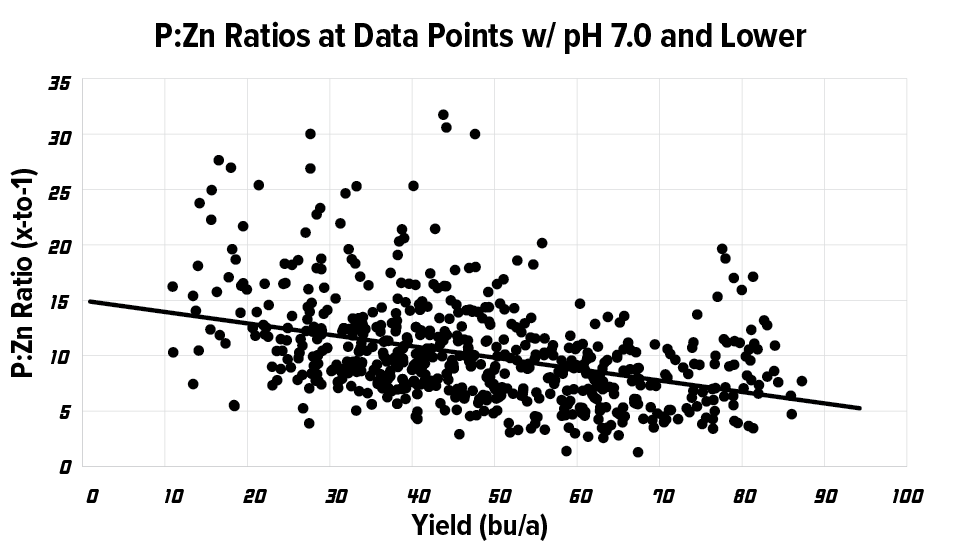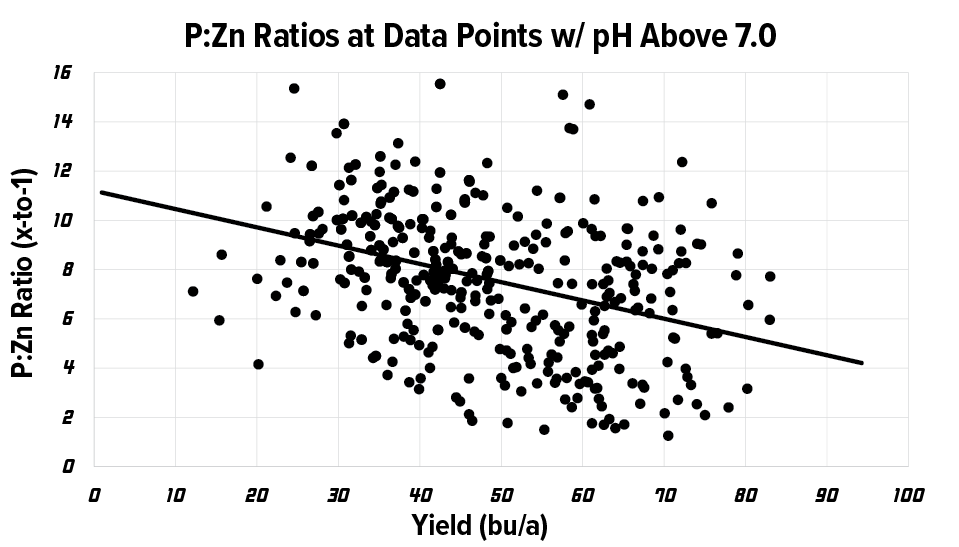

IS ZINC A YIELD-LIMITING FACTOR ON YOUR FARM? While zinc isn’t the first nutrient most farmers will name when I ask what their soils are short in, it’s the NUMBER ONE yield-limiting nutritional factor on many farms. YES, A MICRONUTRIENT REALLY CAN BE THAT BIG OF A CONCERN…
WHY ARE ZINC LEVELS DROPPING?
How are you addressing zinc on your farm? The most common zinc program is to put one quart of zinc chelate in the furrow when planting corn. In soybeans and wheat, hardly anyone adds more zinc. So in a two-year or even in a three-year rotation, it’s rare that more than one quart of zinc is added. If your 9% zinc chelate weighs 11 pounds per gallon, 1 quart of liquid contains just a quarter pound of actual zinc.
As you can see in the chart below, that may not be as much as you are removing from the field each year, and in a two-year rotation, this is especially true in corn followed by soybeans, and it’s even worse if wheat is in the rotation.
This has been backed up for quite some time by soil testing and plant tissue data in the field. In fact, back in 2004 and 2008, we completed the Micro Challenge program where we compiled in-season plant tissue testing data on almost 1000 corn farms across a five-state area (SD, ND, MN, IA, NE). In the 2004 results, 66% of all samples were low or deficient in zinc.

ZINC DEFICIENCY
Zinc is most readily available in soils with a pH of 6.5 or less. However, it can be affected by a number of other factors. High levels of phosphorus, soil organic matter, biological activity, irrigation, and leaching may also influence zinc availability.
While it may look slightly different in each crop, if a zinc deficiency is so severe you can visually see it on the leaves, it will appear on the newest growth, since zinc is immobile in plants. In corn, for example, the newest leaves may show a white streak on the leaf that could eventually tear and rip as the leaf becomes very thin at that point.
FUNCTIONS OF ZINC IN PLANTS
- KEY FOR ABSORPTION
- NECESSARY FOR CHLOROPHYLL AND CARBOHYDRATE PRODUCTION
- IMPORTANT FOR FLOWER FORMATION, FROST PROTECTION, GERMINATION, PROTEIN SYNTHESIS, AND PLANT VIGOR
- CONTROLS THE PRODUCTION OF INDOLEACETIC ACID, A PLANT GROWTH REGULATOR.
THE PHOSPHORUS-TO-ZINC RATIO
Regardless of the type of soil test you run, we’ve found the relationship of phosphorus to zinc is more important than simply looking at zinc levels alone. In the past, we usually figured P1 phosphorus levels to DTPA zinc levels should be about 10 to 1, so we’ve often talked about that 10-to-1 ratio. Today, we’re using Mehlich 3 phosphorus tests versus Mehlich 3 zinc tests, both of which will give higher readings than P1 phosphorus and DTPA zinc, respectively. The ratio is still around 10 to 1, but the two-year data off our farm based on about 5000 data points shows a trend towards even higher levels of zinc compared to phosphorus using the Mehlich tests, maybe 8 to 1 or even less in some cases.
As you work to build your soil fertility levels, keep in mind that you can draw down phosphorus very quickly as your crops use many pounds each year. If you overdo it with zinc, it may take hundreds of years to remove that from the soil, so be conservative as you build zinc levels and look at your own data, as well.
Relationship of Soybean Yields & Phosphorus-to-Zinc Ratio, Fall 2021


The charts above are derived from Mehlich 3 soil test data on the Hefty farm and illustrate that a low phosphorus-to-zinc ratio correlates to higher overall yields across a wide range of scenarios.
If you are renting ground, banding zinc with the planter makes a lot of sense to get the best removal during year one. You likely need an application with each crop and should absolutely soil test to determine that. On ground you own, building up soil levels with a broadcast application of dry zinc sulfate and supplementing with yearly applications of a blended micronutrient product like Micro 1000 is effective, inexpensive, and provides an excellent return on investment. Just remember to stay focused on your phosphorus-to-zinc ratio, rather than looking only at zinc.
MORE FERTILITY QUESTIONS?
To get more information on crop removal rates, download the Ag PhD Fertilizer Removal App.
